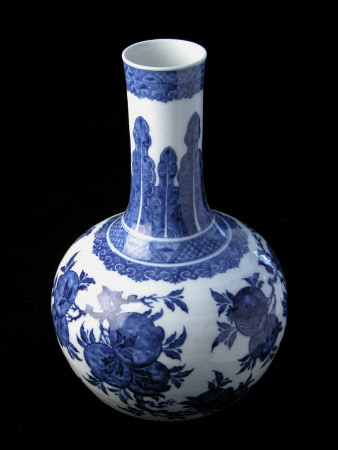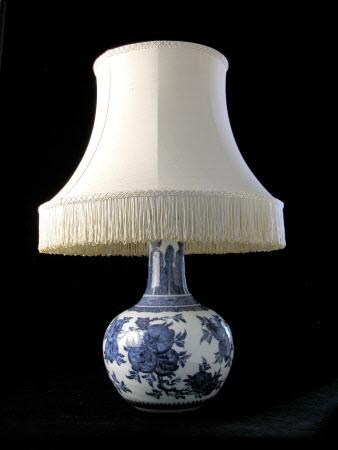Vase
Category
Ceramics
Date
1775 - 1825
Materials
Porcelain, cobalt
Measurements
335 mm (Height); 70 mm (Diameter); 110 mm (Diameter)
Place of origin
Jingdezhen
Order this imageCollection
Saltram, Devon
NT 870909
Summary
Pair of vases, porcelain, tianqiuping 天球瓶 (‘celestial sphere’) shape (a globular body surmounted by a tall cylindrical neck), made in Jingdezhen, Jiangxi Province, China, 1775–1825, decorated in underglaze blue with the ‘three abundances’ (sanduo 三多), namely peaches, finger citrons and pomegranates, a band of ruyi (wish-granting sceptre) motifs and a band of diaper pattern at the base of the neck, stylised leaves around the neck and further ruyi and diaper bands below the rim, fitted as electric lamps.
Full description
In Chinese art, peaches, finger citrons and pomegranates can all be used as symbols of abundance, but when seen together their significance is amplified, further reinforced by the wish-fulfilling tri-lobed ruyi motifs (Bjaaland Welch 2008). A blue and white porcelain jar decorated in a similar matter (but possibly slightly earlier in date) is at Dunham Massey, NT 929299. A similarly decorated blue and white porcelain vase was sold at Christie’s New York, 14 September 2012, lot 1493.
Provenance
Accepted by HM Government in lieu of inheritance tax and allocated to the National Trust, 1957.
References
Bjaaland Welch 2008: Patricia Bjaaland Welch, Chinese Art: A Guide to Motifs and Visual Imagery, Tokyo, Rutland (Vermont) and Singapore, 2008, pp. 48-9

